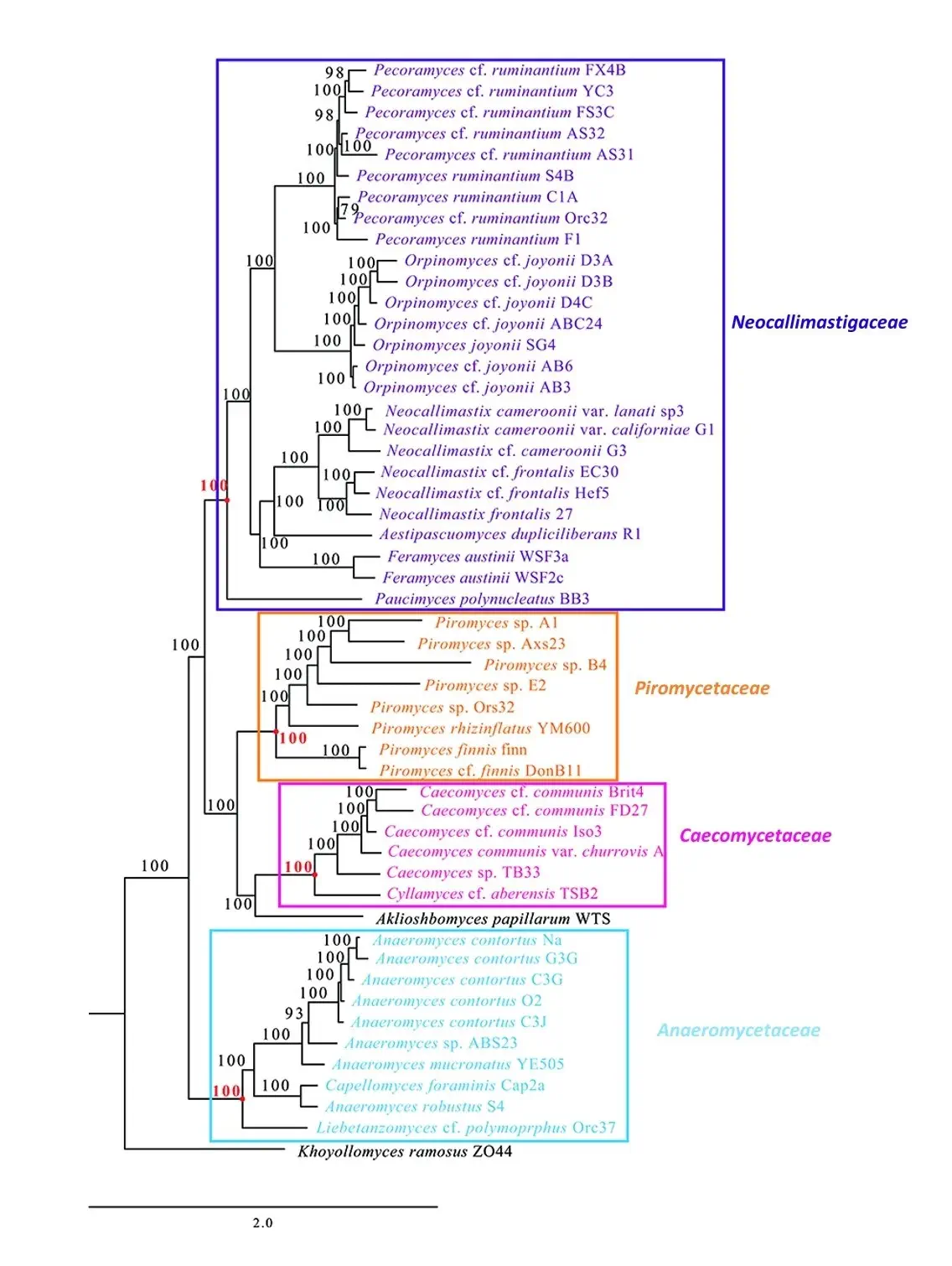Anaerobic fungi are the sole members of the phylum Neocallimstigomycota.
Within this phylum, there is only one class (Neocallimastigomycetes) and one order (Neocallimastigales). In the Neocallimastigales order, four different families have been described to date (Hanafy et al., 2022). These families are Anaeromycetaceae, Caecomycetaceae, Neocallimastigaceae and Piromycetaceae. A phylogenetic tree (provided by the Elshahed/Youssef lab) showing the four families, and the genera belonging to them, is pictured below.

There are currently 22 anaerobic fungal genera described, however, not all of them have been assigned to a family. This is because proposition of a novel family based on a solitary genus and species is not advised (in the case of the genera Aklioshbomyces, Astrotestudinimyces, Khoyollomyces, and Testudinimyces). Furthermore, the lack of transcriptomic/genomic information for the genera Agriosomyces, Buwchfawromyces, Joblinomyces, andTahromyces also makes assigning them to a family currently not advisable.
Additional details of the 22 characterized anaerobic fungal genera (listed in alphabetical order) can be accessed here:
A table providing an overview of the key morphology features of the 22 characterized genera (modified from the review of Hess et al (2020)) is available:
